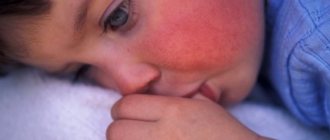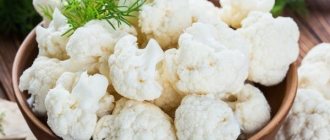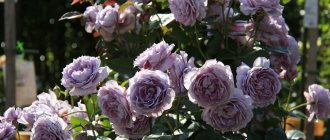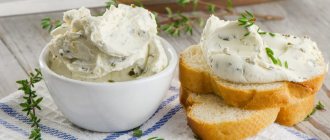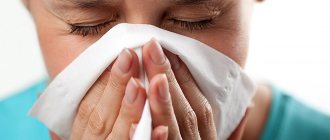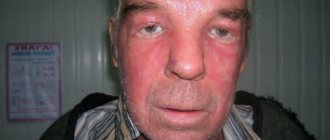Pine pollen allergy
What you need to know if you are allergic to pine pollen.
Pine has healing powers because it releases essential oils that are beneficial to the human body. They are used in cosmetology and medicine, and walks through the pine forest are recommended for healing and recuperation. However, the protein contained in pine essential oils can cause quite strong allergic reactions.
Features of allergies
Pine pollen, which is dangerous in terms of , appears in each region at different times. As a rule, the time of active dusting occurs in spring or early summer; it also depends on weather conditions. Pine pollen is very small particles that are carried by the wind over long distances. In just one day, their concentration in the air can increase significantly.
There are only two reasons for allergic manifestations: hereditary predisposition and a decrease in the body’s immune defense. Pine pollen has some features in comparison with derivatives of other plants. It is stickier and heavier, but can still spread through the air.
Symptoms and manifestations
caused by pine pollen are similar to standard hay fever - a reaction to the flowering of various plants. The manifestations are:
- Itching in the eyes, their redness;
- Swelling under the lower eyelids;
- Nasal congestion;
- Cough;
- Sneezing.
Allergies can be accompanied by a sore throat, discomfort in the gastrointestinal tract, and disturbances in appetite and sleep. A constant companion of the disease is heavy breathing, shortness of breath. Sputum can descend into the bronchi, causing complications. People suffering from hay fever experience increased fatigue, skin rashes, and sometimes nausea and vomiting. developing under the influence of pine pollen leads to an exacerbation of asthma.
In no case should you ignore the listed symptoms, nor should you self-medicate. An illiterate approach in such situations can cause quite serious consequences, for example, anaphylaxis or Quincke's edema. Such complications are life-threatening and require mandatory hospitalization.
Allergen identification and treatment
It is very important to promptly identify the source of the allergy, since the symptoms of reactions to the flowering of different plants are almost the same. Skin tests are performed to identify a specific allergen, and a blood test may be required to determine antibodies to pine pollen components.
When performing tests on the skin, pollen is applied to it, dissolved in a special liquid. Next, the reaction to the stimulus is recorded. If the affected area becomes swollen and red, this indicates an allergic reaction.
Treatment is prescribed by an allergist, taking into account the individual characteristics of the body and other factors. Typically, medications are used to relieve symptoms, as well as immunotherapy drugs. Special sprays help relieve nasal congestion, and antihistamine gels relieve skin itching.
Preventive measures
Despite the active movement of pollen in the air, there are some rules that help avoid exacerbations:
- It is better to visit the forest in the afternoon, since the maximum concentration of pollen occurs in the early morning;
- A respirator mask for allergies is perfect for walking ;
- Closed windows in the house help protect the room from allergen penetration;
- It is also advisable to keep the car windows closed;
- It is better to dry laundry indoors rather than outdoors;
- Air conditioner filter elements must be washed and cleaned regularly.
The point of all these measures is to minimize exposure to pine pollen. A simple gauze bandage does not give such an effect, but modern devices reliably clean the inhaled air of allergens and harmful fumes. buy an allergy respirator in an interesting and fashionable design, with various designs and replaceable filters.
Such devices make life much easier: with them you can take walks, play sports and any other activity without the risk of allergic manifestations. Such reactions can be unexpected, because a person does not always know that a pine tree is nearby. That is why, if you have a predisposition to allergies, it is advisable to have a respirator and antihistamines with you.
Treatment options
Treatment of allergies to a live or artificial Christmas tree begins with elimination therapy, which is based on minimizing the impact of allergens on the body.
If you are allergic to pollen and essential oils of coniferous trees, you should:
- Refuse to install live pine or spruce at home.
- Avoid staying in coniferous forests.
- Remove trees to which allergies develop from the area near the house.
You cannot use cosmetics and ointments containing pine needle etherols. You should stop using homemade medicines based on tree cones and needles.
The features of elimination therapy also depend on the diagnostic results. If during the examination it is established that you are intolerant to mold and dust particles, then you need to pay as much attention as possible to the cleanliness of your home.
It is necessary to repair the plumbing, since fungi actively multiply in damp places, and re-glue the wallpaper after first removing mold on the walls.
In living rooms, you need to carry out wet cleaning daily and remove things that easily accumulate dust.
If you are allergic to plastic and chemicals, you should not install artificial Christmas trees at home. You should also avoid purchasing trees that have been treated for parasites.
Drug therapy
When the source of irritation is eliminated, a mild allergic reaction goes away within a few days without the use of medications.
But if the clinical picture of an allergy to the Christmas tree manifests itself clearly, greatly worsens the state of health, causes intense itching of the skin and respiratory problems, then the use of medications - antihistamines - is necessary.
Usually the doctor prescribes systemic antiallergic drugs in tablets:
- Erius.
- Trexyl.
- Claritin.
- Gistalong.
- Semprex.
- Loratadine.
- Centrin.
- Fenkarol.
For children, it is preferable to relieve allergies with drugs in solutions and syrups - Fenistil, Zyrtec, Zodak.
Antihistamines are also available in eye drops, nasal and eye sprays, ointments and gels.
For nasal congestion caused by allergens, Tizin Alergy, Cromohexal, Allergodil Spray, Sanorin Analergin help well. Local vasoconstrictor medications can also be used to eliminate the symptoms of rhinitis.
For allergic conjunctivitis, Opatonol, Allergodil, Levocabastine are prescribed.
For contact dermatitis, to reduce itching and swelling, products such as Fenistil gel, Psilo-balm, Biolin, Zinc paste, and Gistan are used.
Ointments with hormones are prescribed if conventional antiallergic drugs do not help. They are used for a short course.
To relieve an acute attack of allergy, manifested by angioedema, anaphylactic shock, injection of Suprastin, Prednisolone or Dexamethasone is necessary. When blood pressure drops, Adrenaline is used.
The course of therapy for a patient with allergies is selected individually in each case. The doctor prescribes medications based on the severity of the allergy, the main manifestations of the disease, the patient’s age, and concomitant pathologies.
During the treatment period, you must also follow a diet that involves temporarily excluding foods with a high allergenic index from the diet.
For a larger list of antihistamines, see here https://allergiik.ru/preparaty.html.
Use of folk remedies
The main drug treatment for Christmas tree allergies can be supplemented with traditional medicine. The use of herbal remedies strengthens the immune system, reduces inflammatory reactions and symptoms of an allergic reaction.
For all forms of Christmas tree allergies, the following help well:
- Juice from celery root. The peeled and washed root is grated and the juice is squeezed out of the resulting mass. Dosage – 2 teaspoons of juice per day 20-30 minutes before meals. For children, the dosage is halved.
- Shilajit solution. In a liter of warm boiled water you need to dissolve 2 grams of mountain balsam. Take the resulting drink 50 ml 3-4 times a day. For children, 2-3 tablespoons per day is enough.
- Tea from a series. Tea at the rate of a teaspoon of herbs per glass of boiling water is prepared fresh before each use. It is advisable to completely replace regular tea with a herbal drink. They drink herbal tea for 4-6 months in a row.
For skin allergy symptoms, a bath with the addition of a decoction of chamomile or chamomile flowers effectively reduces itching. You can relieve irritation with cold compresses or a cool shower.
If the nose is stuffy, it is recommended to instill an infusion of chamomile or calendula flowers into the nasal passages; they dilute accumulated mucus well.
Allergy to pine pollen
Although pine allergies are relatively rare, there are two major allergens of concern that come from conifers: pine nuts and pine pollen. Pine nuts are edible seeds and are used in a variety of products, including Italian pesto. Pine nut consumption has increased due to its use in the Mediterranean diet.
Pine pollen is produced when trees send out flower buds in the spring. Pine pollen is tiny particles that are easily carried by the wind for many kilometers, and its concentration in the air can reach up to 1200 grains per cubic meter within a day.
Pine pollen allergies are similar to other allergic reactions from flowering plants, and many people with pine pollen allergies also have allergies to other types of pollen.
Types of allergic reaction
Coniferous tree species are distinguished by a high content of resinous substances, which, against the background of reduced immunity, are perceived by the body as dangerous and cause a defensive reaction.
Provocation of symptoms can be different:
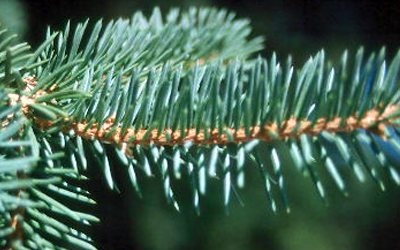
contact - manifests itself in direct contact with the allergen;- food - occurs when consuming products with extracts of pine needles or pine nuts;
- hay fever - allergens are odors, resin esters, pollen from trees during flowering.
Therefore, people suffering from the presence of pine needles need to be careful both during the New Year holidays, when allergies to live Christmas trees worsen due to their abundance, and in everyday life, for example, when buying furniture, which is often made from these types of wood.
Pine pollen allergy symptoms

Symptoms of a pine pollen allergy are very similar to those of hay fever and usually include:
- Itchy red eyes;
- Swelling under the eyes;
- Nasal congestion
- Sneezing;
- Cough.
In some cases, pollen can aggravate asthma. Particular attention should be paid to how the reaction to this allergen proceeds.
If you have some signs of an anaphylactic reaction, even if they are mild, you need to take it seriously because it will not go away on its own. These symptoms include the above and:
- Itching and sore throat;
- Sneezing;
- Discomfort in the abdomen.
Treatment of allergies to pine pollen
Depending on the manifestation of the allergy, only an allergist can prescribe appropriate treatment. You shouldn’t buy allergy medications at a pharmacy because they were advertised on TV. With regard to allergies, each patient is individual.
Doctors usually prescribe medications that relieve allergy symptoms or a course of immunotherapy.
Although pollen travels easily in the air, certain strategies can help avoid a flare-up. Pollen levels tend to be highest in the mornings (between 5 and 10 a.m.) and when the air is dry. Therefore, when planning a walk in the forest, postpone it until noon or evening.
To avoid pollen getting into your home, minimize contact with it:
Keep windows closed;
Close car windows;
To dry clothes, use a dryer or hanger in the house;
Change (wash and clean) the air conditioner filter regularly.
Can you be allergic to pine pollen supplements?
Now, regarding allergies to pine pollen as a dietary supplement. Manufacturers honestly warn that its use may cause an allergic reaction. But this does not mean at all that it is of poor quality. Simply, if you are allergic to any pollen or bee products, you should definitely consult your doctor before starting to take this supplement. This is especially important for those who take medications prescribed by a doctor.
Pine pollen as a dietary supplement is marketed as a broad-spectrum product that will help make you healthier. Fortunately, scientists do not refute this fact, but, on the contrary, confirm it.
Firstly, pine pollen is full of vitamins, minerals and amino acids, which together help our body perform all its functions at the proper level.
Secondly, pine pollen has many sterols, which are natural plant steroids.
The sterols it contains work in a variety of ways to benefit overall health, each with a different purpose:
Brassinolide improves liver function;
Castasterone is a strong antiviral agent;
Gibberellins help regulate the size of the prostate gland.
Pine pollen has been used in China and many Asian countries for thousands of years as an anti-inflammatory agent, as a way to cleanse the body of harmful substances, to fight free radicals and slow down the aging process.
And the male half loves it for its properties to prolong their sexual energy.
Some people have a true pine pollen allergy. However, there are quite a few people with true allergies and most of these allergy sufferers react to other types of pollen. Using pine pollen as a dietary supplement is considered safe for most.
The use of raw pollen or in the form of a tincture is recommended for people with a mature endocrine system, after puberty. Some companies recommend their products for young men over the age of 18, but most companies recommend their products for men over 20 years of age and with low testosterone levels. This once again suggests that before starting treatment, you need to consult an appropriate specialist.
Ingestion of pollen may cause allergies in pregnant and breastfeeding women. At this time, changes occur in a woman’s body, and they can cause allergies. When breastfeeding, we must not forget that pollen compounds enter the baby’s body in breast milk. No one can predict what his reaction will be.
As noted by scientists who study the properties and effects of pine pollen on the human body, pollen tincture is intended for middle-aged and older men, those who have various types of diseases, which it will help cure or reduce the symptoms of their manifestation.
Raw pollen, i.e. Pollen powder (it can be in capsules or tablets) can be used as a dietary supplement by almost everyone: men, women, teenagers, children, except in cases that are contraindicated.
Symptoms of pine allergy
Pine allergy is one of the most severe forms of sensitization. Most doctors recommend that patients visit the pine forest more often. But this is not useful for everyone. The causes are usually related to hypersensitivity. Most often, people feel it during the flowering period of plants. At this time, a large amount of protein is in the air.
In this case, an allergic reaction manifests itself not only upon contact with a living plant, but also after using furniture. Exacerbation also occurs under the influence of the smell of pine. Therefore, patients are advised to avoid contact with wood and always carry antiallergic medications with them.
Causes
The main provocateur of increased sensitivity is plant pollen, which is concentrated in the air during flowering periods. This is due to the presence of protein components in its composition that cause a negative reaction of the immune system. Therefore, people with a predisposition should not take walks through the pine forest.
Allergic reactions under the influence of pine are quite strong, so it is not advisable to ignore the problem.
The risk of developing the disease increases under the influence of several factors:
- genetic predisposition;
- weakness of the immune system after infectious diseases and chronic inflammatory processes.
Pine contains a large amount of highly concentrated essential oils. Their release occurs regardless of the time of year, but during flowering seasons these components have an even stronger effect. For allergy sufferers, pine resin also has a negative effect.
While hypersensitivity to pollen is considered a seasonal phenomenon, essential oils are dangerous all year round, so patients should beware of any products made from this tree.
How dangerous is a Christmas tree?
Allergies can be triggered by the following factors:
- Tree resin
The effect of resin on the body can be both positive and negative. It is a biologically active substance, and, therefore, is capable of emitting essential oils and phytoncides. It is no coincidence that the latter are called natural antibiotics, since they have a powerful antimicrobial effect. Their benefits for the body are obvious. However, the constantly present intrusive smell of essential oils can provoke allergies in the baby.
- Mold fungi
These fungi literally entangle the tree bark. It is no coincidence that experts put them in second place in danger after house dust mites - they are a very powerful allergen. When a Christmas tree appears in a warm house, and then is placed in wet sand or a container of water, ideal microclimatic conditions are created for the rapid proliferation of fungi. And after a few days, their disputes scatter throughout the apartment. They create a large load on the mucous membrane of the respiratory tract, as a result of which a baby who does not suffer from allergies may experience difficulty breathing.
- Chemical substances
The Christmas tree is treated with special solutions even during cultivation to destroy pests that settle in the trunk, branches and needles. It is also treated with chemicals after the log house, in order to preserve its presentation for as long as possible, and also for safety reasons - to prevent its accidental fire in the room.
- House dust
During the entire time the Christmas tree is in the house, a huge amount of dust settles on it, which cannot be removed. In addition to dust, epithelial particles and dust mites appear on the needles.
Manifestations
Symptoms of pine allergy can manifest themselves in various organs and systems, but most often the respiratory tract is affected, as pollen enters with the air. When the allergen accumulates in the body, other signs appear:
- first, the patient develops a runny nose and sneezing attacks;
- sore throat and a bothersome dry cough;
- headache;
- nausea begins, turning into vomiting;
- in rare cases, the skin becomes covered in rashes and itches.
At the slightest manifestation, you need to visit a doctor, since only he can make a diagnosis, select medications and provide medical assistance.

How to deal with the problem
Allergies to pine resin and its other components begin to appear unexpectedly. A person may not even know that there are trees somewhere nearby. Therefore, people with such problems should always carry an antihistamine with them.
Therapy consists of using various means to eliminate the symptoms of the disease:
- When the allergen has been detected, it is necessary to block the production of histamine. This substance begins to be produced after the irritant penetrates the body. For this, medications like Suprastin, Diazolin and others are used. These medications can cause addiction and drowsiness, so use them with extreme caution. To reduce the risk of side effects, they resort to new generation drugs like Loratadine, Zyrtec and others. They have the same effect, but are safer for the body.
- To get rid of nasal congestion and reduce swelling of the mucous membrane, use nasal sprays.
- If allergies lead to skin itching and irritation, topical medications are needed. In such cases, Fenistil gel is often prescribed. For serious lesions that cannot be treated with gentle drugs, turn to hormonal ointments. They contain glucocorticosteroid hormones, so they are only allowed for use for a few days. A doctor should prescribe such medications.
- Coughing attacks are eliminated with the help of bronchodilators.
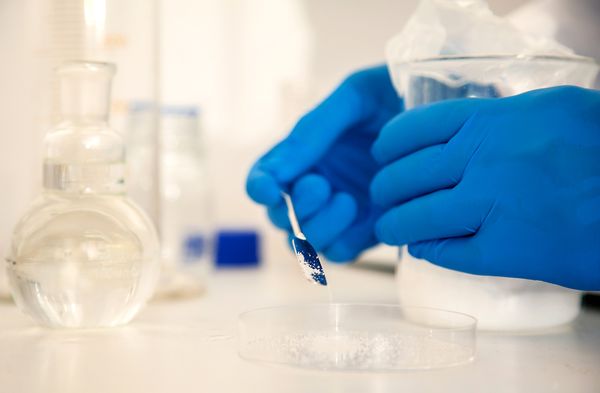
Specific immunotherapy is considered a more effective option for relieving allergic reactions. It consists of introducing certain doses of the allergen into the body over a long period of time. The dosage is gradually increased. It is possible to achieve a reduction in the reaction to the stimulus only after several years of such treatment.
The drugs are administered under the skin by injection or taken in the form of drops and tablets under the tongue.
An allergy to pine in a child requires the use of more gentle methods. Therefore, with the permission of a doctor, folk remedies are sometimes used. Most often, mumiyo is used for these purposes. A solution is prepared from it and taken 50 grams in between meals.
Decoctions of celery root are also prepared. The medicine is drunk before eating. To prepare, you need to grind the root of the plant and keep it in a water bath for a quarter of an hour.
Prevention and treatment
Allergies to pine and spruce most often occur twice a year - on the New Year holidays and in May, when the trees bloom.
Therefore, prevention requires:
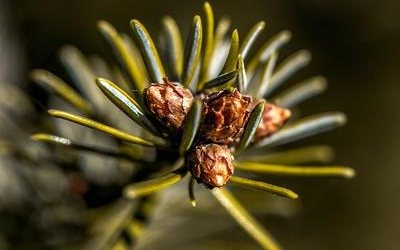
do not approach conifers in May-early June, if this is not possible, have antihistamines available;- on New Year's holidays, if possible, rinse the tree with cold water or use aerosols to purify the air;
- do not keep pine or spruce in the house for more than 4-5 days;
- purchasing fir as a holiday tree can reduce the likelihood of consequences;
- in case of a pollionese allergic reaction, it is recommended to carry out immune therapy, which will reduce the risk of exacerbations and consists of the gradual introduction of the allergen into the body to rearrange metabolic processes.
To quickly relieve symptoms, rinsing the nasal cavity and throat with a weak salt solution while stopping contact with the allergen helps. Treatment consists of taking antihistamines and strengthening the immune system, both through medication and general health improvement of the body.
Thus, an allergy to pine needles has symptoms of respiratory diseases, and is therefore difficult to diagnose. Testing for this allergen in a clinic will help make an accurate diagnosis, and immune therapy will allow you to be in contact with coniferous wood all year round.
Due to environmental degradation and the presence of chronic diseases, people are increasingly becoming allergic to food, dust, and animal hair. The body can react negatively to the Christmas tree by touching its branches, needles, cones, or inhaling pollen.
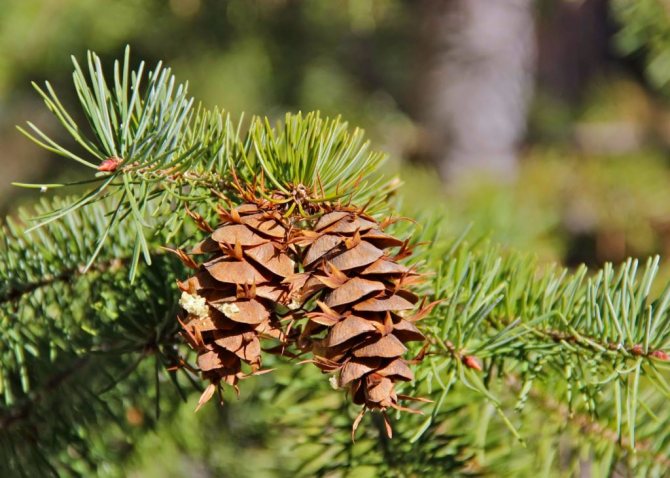
Prevention
To reduce the risk of exacerbation of an allergic reaction, you need to avoid contact with the irritant. To do this, during flowering periods, plants should, if possible, move to more favorable areas or try to go outside as little as possible.
You should also avoid pine products and always carry an antihistamine with you.
Allergies to pine essential oil and other tree components require close attention. At the first manifestations, you need to visit a doctor and undergo an examination. After determining the type of stimulus, a suitable course of treatment is selected.
Specific immunotherapy shows good results, but it takes a lot of time and does not always help to achieve good results. This method is not used to treat children, since the reaction can be unpredictable.
Diagnostics
The initial diagnosis of allergies can be done independently. To do this, you should come into contact with a potential allergen and monitor your health.
If certain changes for the worse have occurred and symptoms such as allergic rhinitis or conjunctivitis, burning of the mucous membranes have appeared, then most likely this is a sign of an allergic reaction.
In this case, you should stop any contact with the potential allergen and seek help from an experienced allergist. He will conduct all the necessary clinical tests and make a conclusion about the upcoming course of treatment.
Causes of pine allergy
Undesirable symptoms occur due to individual intolerance to the components of pine needles, wood, pollen or oils, which have a strong concentration. This is especially evident in the warm season, when high temperatures release a large amount of oils into the air.
Some people suffer from hay fever, a seasonal disease caused by an allergy to pollen. In this case, symptoms appear only during the flowering period, i.e. at the end of spring. It is difficult to diagnose such a disease, because the wind carries pollen tens of kilometers from the location of the tree itself. Only tests will help determine the cause of the allergy.
Reaction to artificial tree
Some people may also be allergic to artificial Christmas trees. In this case, the person reacts not to pine needles, but to plastic. It contains a large number of chemicals that are allergens. It also releases large amounts of toxins. Their release occurs especially strongly when the plastic is heated. This is facilitated by the lanterns used to decorate the artificial tree.

Artificial spruce can accumulate mold during storage. And it is a strong allergen. An artificial tree, just like a living tree, accumulates dust that cannot be completely removed.
Symptoms
An allergic reaction to pine manifests itself differently in each person. The most common signs are the following:
- runny nose (swelling of the mucous membrane, nasal congestion, copious clear discharge);
- inflammation of the mucous membranes of the eyes, lacrimation;
- rashes on the body and face;
- shortness of breath, suffocation, asthma attacks;
- itchy skin;
- obsessive dry cough without sputum production;
- sneezing;
- chronic fatigue;
- sleep problems;
- general deterioration of health.

If you notice any of the above symptoms, you should consult a doctor. Before choosing a treatment tactic, the specialist will prescribe examinations and make a diagnosis. This will make sure that the allergic reactions are caused by pine and not something else.
Diagnostic measures include a number of studies. This could be allergy tests or a special blood test.
Allergy tests are carried out in a laboratory under the supervision of a doctor. It is advisable to do this between October and March, when there is no flowering. Failure to comply with this requirement may result in accidental interaction with the allergen and incorrect results.
You need to be healthy during research. You also need to prepare for them:
- 3-5 days before the test, stop eating foods containing histamine liberators: chocolate, sharp cheeses, coffee, honey, alcoholic beverages.
- 5-7 days before the study, stop taking antihistamines.
- For 1-3 days, stop using skin care products, hormonal and antihistamines for external use. This applies to those areas of the skin on which tests will be carried out.
Before testing, you should tell your doctor or laboratory technician about all medications you are taking. If there are no contraindications to the procedure, the specialist makes scratches on the skin using a scarifier (a plate with sharp teeth), applies various substances to them and waits 15 minutes. If the skin turns red when interacting with pine concentrate, this indicates the presence of hypersensitivity.
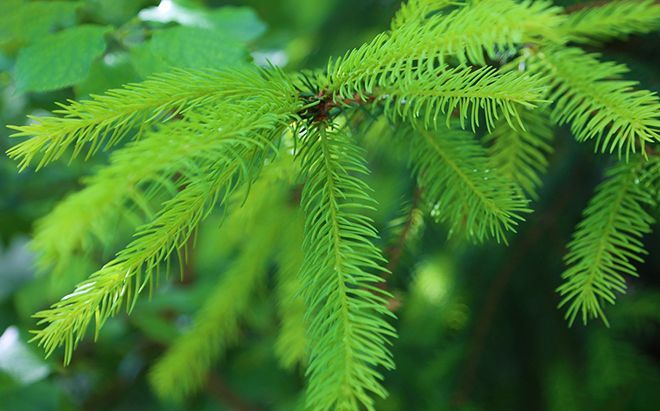
Features of allergy treatment
Only an allergist can select the appropriate course of therapy. Therapy is carried out in several directions:
- eliminating situations in which the allergen can affect the body;
- relief of existing symptoms through medications;
- increasing immune defense to avoid recurrence of the disease.
Most often, patients are prescribed antihistamines: Suprastin, Cetrin, Erius, Claritin, Zyrtek, etc. First-generation medications have a pronounced sedative and hypnotic effect and cause undesirable effects from the central nervous system (dizziness, decreased concentration, etc.).
Second- and third-generation drugs do not cause drowsiness or addiction, which allows you to lead a normal lifestyle and drive vehicles. The doctor should select the medicine based on the individual characteristics of the patient.
If an allergy to pine furniture, pine needles or resin causes allergic rhinitis, nasal medications are prescribed.
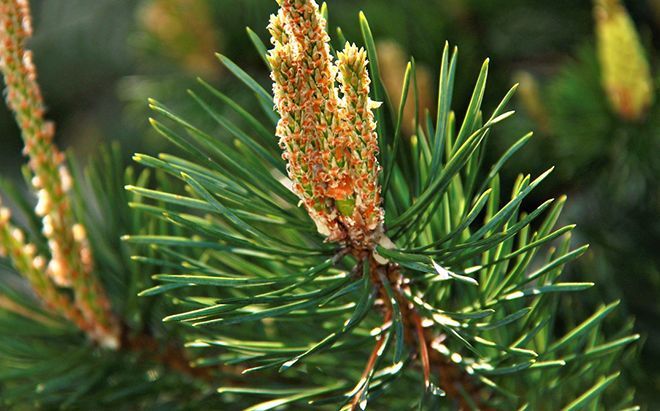
They are divided into 3 main categories:
- Antihistamines (Tizin, Allergodil). Used to eliminate allergic reactions and accompanying symptoms.
- Glucocorticosteroids (Avamys, Nasonex, Nasobek). Hormonal drugs. Reduce inflammation of the nasal mucosa.
- Vasoconstrictors (Naphthyzin, Sanorin, Otrivin, Nazivin). Relieves swelling of the mucous membrane, restores patency of the nasal cavity, and facilitates breathing. Should be used rarely and for a limited time (maximum 5 days). Otherwise, addiction occurs and the medications stop working.
Immunotherapy is used to treat hay fever. It involves introducing a small amount of allergen into the body. Undesirable symptoms do not develop, but the immune system becomes more resistant to this irritant.
There are also folk remedies that help with allergies. To eliminate symptoms and increase immunity, you can use freshly squeezed celery juice. The plant is passed through a meat grinder or juicer, and the remaining juice is taken three times a day, half an hour before meals. Single dose - 2 tsp.
Folk remedies
In addition to the main treatment for Christmas tree allergies in adults and children, traditional medicine is used. The most common recipes include:
- Celery root juice. The root is washed and grated on a coarse grater. Afterwards the juice is squeezed out. It should be taken three times a day, two teaspoons half an hour before meals. Celery relieves allergy symptoms and strengthens the immune system.
- Mumiyo. This is the most effective remedy. 2 grams of mumiyo are diluted in a liter of water. The resulting solution is taken 50-100 grams several times a day between meals.
For allergic rhinitis, it is recommended to brew herbal teas, which can be purchased at any pharmacy. They dilute mucus, relieve spasm and inflammation. Inhaling the aromas of garlic, horseradish, and chili peppers also removes mucus well. A cup of green tea provides short-term relief. It contains antioxidants that prevent allergic reactions.
Cold compresses will help reduce inflammation and eliminate itching in allergic conjunctivitis. To do this, use towels soaked in ice water or pieces of ice wrapped in natural fabric. Rubbing the eyes with chamomile infusion or aloe juice also gives good results.
For allergic dermatitis, a cold shower will give a good result. It will reduce itching and the number of rashes. Afterwards the body should be rubbed with olive oil.
Although a tree allergy is quite rare, it has quite serious consequences. Therefore, when the first symptoms of an allergic reaction appear, you should not self-medicate, but rather rush to see a doctor.
Allergies in a child
A child suffers from exposure to allergens more than an adult. In his case, in addition to the symptoms listed above, others are added: tearfulness, insomnia, irritability, problems with appetite and academic performance. To solve the problem, you need to contact a pediatrician and allergist and undergo the necessary examinations.

The reasons for the development of pine allergy in a child are the same as in an adult. Genetic predisposition also plays a role: if one of the parents has an allergy to conifers, the probability of developing the same problem in children is 30%. If the disease is observed in the father and mother, the risk increases to 70%.

